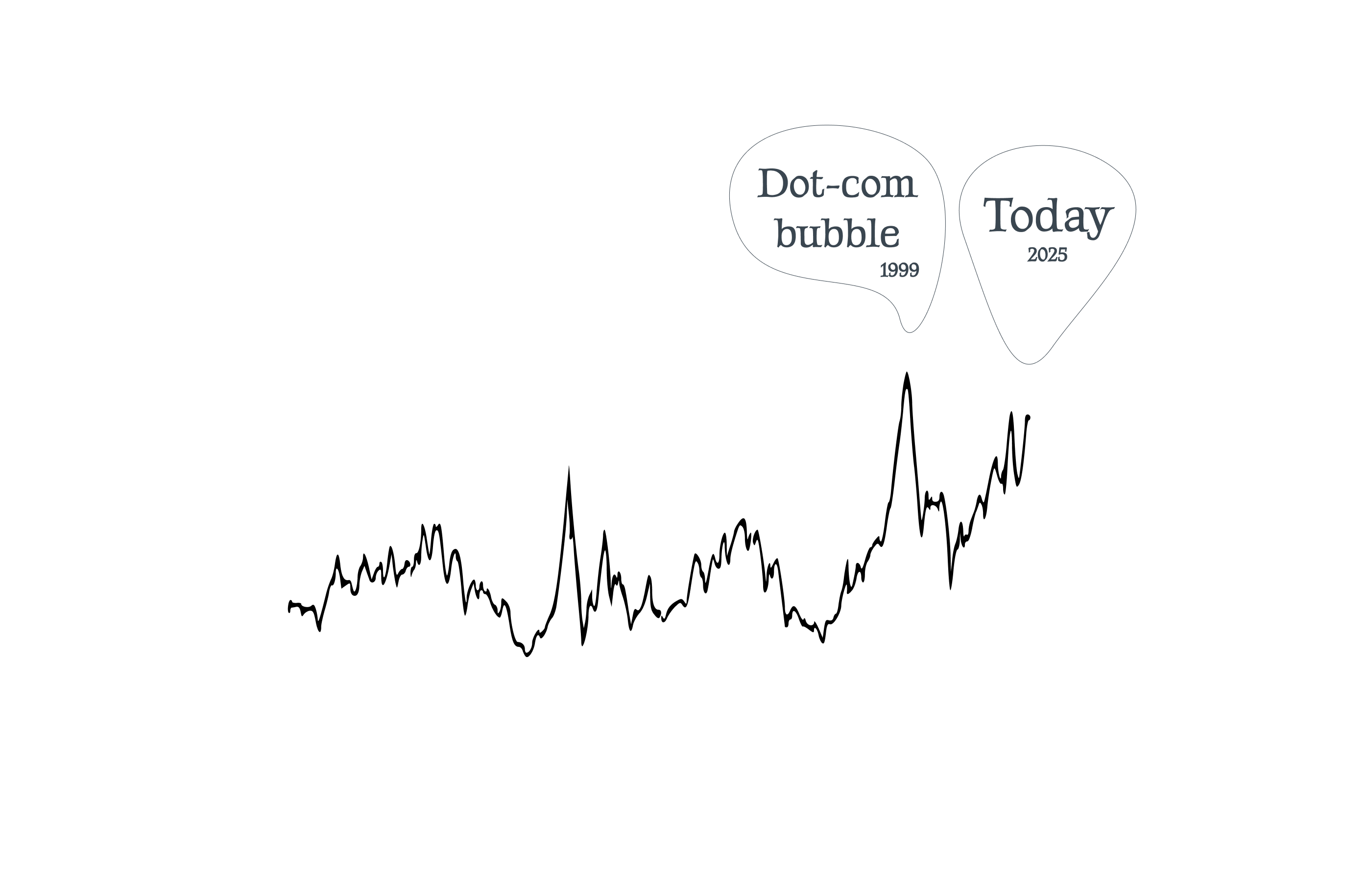
Hi, I’m Richard. On this blog I share my thoughts, not investment advice. This is not a recommendation to buy or sell securities.
Do You Know What CAPE Is? Similarities Between the Present and the Dot-com Bubble
By Richard Golian8 February 2025 Castellano Slovenčina
Do you know what the Cyclically Adjusted Price-to-Earnings Ratio (CAPE) is? If not, you probably should. Right now, we are at levels reminiscent of the dot-com bubble at the turn of the millennium.

CAPE, also known as Shiller P/E, is a way to determine whether stocks are expensive or cheap. It works by comparing the price of stocks in the market to the average earnings of companies over the past 10 years, adjusted for inflation. Think of it as a tool that smooths out short-term fluctuations and gives us a long-term perspective on whether the market is overvalued (too expensive) or undervalued (cheap). If CAPE is high, it suggests that stocks might be overpriced, reducing the likelihood of high investment returns in the future. The only exception would be if companies’ earnings were to grow dramatically in the upcoming years — far more dramatically than what we saw even during the rise of the internet, one of the biggest technological revolutions in history.
The Story of the Dot-com Bubble
In the 1990s, the internet emerged as a revolutionary technology that promised unlimited possibilities. Startups with vague business models but promising names began to achieve billion-dollar valuations, often without generating real profits. Investors, driven by optimism and the fear of missing out, poured money into any company with ".com" in its name.
At the height of the dot-com bubble, the CAPE for the S&P 500 reached 44.2, the highest figure in modern history. This indicator suggested that the market was extremely overvalued. When investors realized that many of these companies would never be profitable, the sell-off began. By 2002, the Nasdaq index had dropped by more than 75%, and many internet companies had disappeared. For those who invested at the height of the bubble in 2000, it took more than a decade for their investments to regain the same real value. This prolonged recovery was not only due to falling prices but also the impact of inflation, which further eroded the actual value of invested funds.
February 2025
Today, CAPE for the S&P 500 sits at around 38, significantly above the historical average of approximately 16-17.
History doesn’t replay itself, but its parallels can’t be ignored.
Disclaimer:
This article is intended for informational and educational purposes only. It does not constitute financial advice, a recommendation to buy or sell any securities, or a guarantee of future market performance. The views expressed are solely those of the author, who may also be an investor. Investing in financial markets involves risk, and each reader should make their own decisions independently and, if necessary, consult with a licensed professional.

If you have any thoughts, questions, or feedback, feel free to drop me a message at mail@richardgolian.com.









 322
322